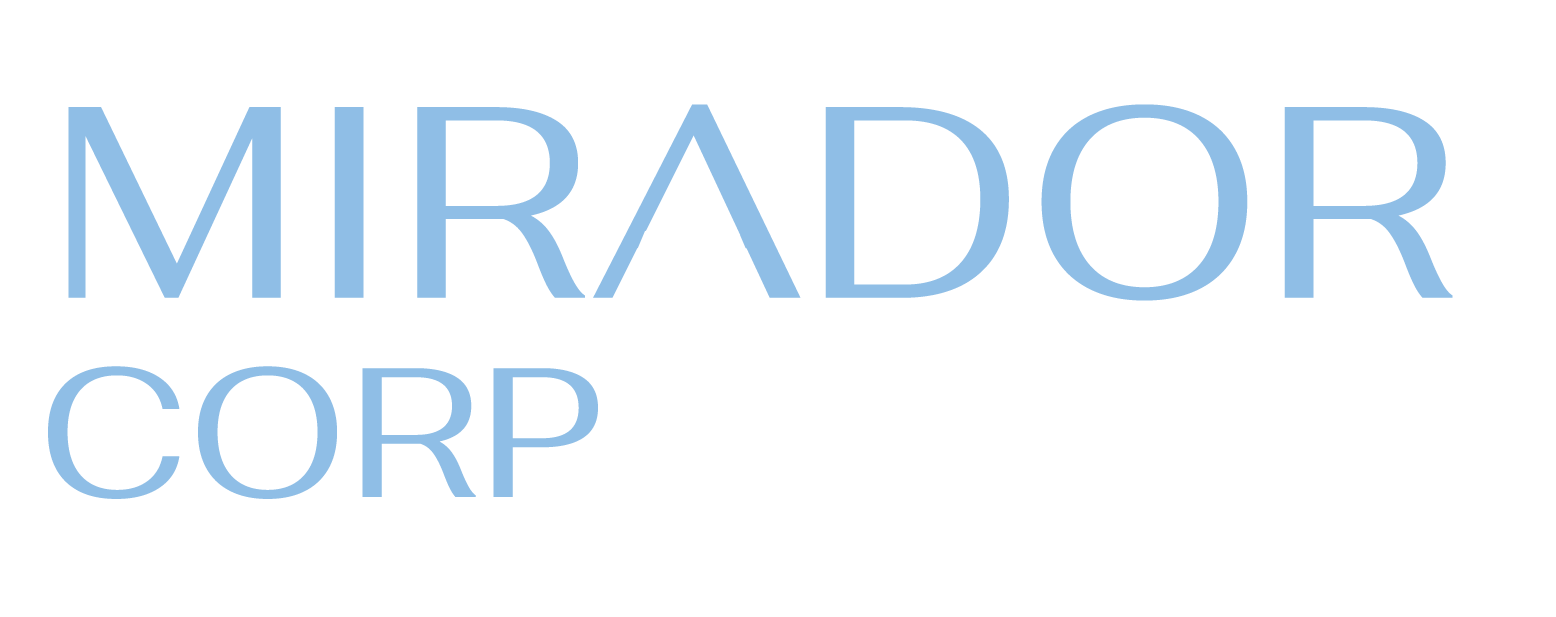Mirador Real Advice Blog
Covered Call Writing (CCW) for Income Investors
Be the Casino Owner, Not the Gambler
May 16, 2024
As part of our efforts to do the best possible work creating a digital footprint for Mirador, we read several other content providers – a sort of weekly competitor research task. I recently watched a video titled “Covered call writing sucks”! It was a poorly researched video and seeing it prompted me to write this blog because, when managed correctly and implemented in the right conditions, covered call writing (CCW) with exchange-traded options can be a very effective component of one’s overall income investment portfolio, and this is what Mirador does.
I will try to make this post as clear as possible, but exchange-traded stock options and their option strategies are not the easiest to understand – please phone me if you want to discuss them and gain better clarity.
Exchange-traded options have been around for a long time. I passed my options exam and became registered to recommend option strategies sometime in the early 1990s. Back then I was introduced to a research company called Dorsey Wright and Associates. Prior to starting Dorsey Wright and Associates, Tom Dorsey was an options strategist at a major U.S. investment firm in the 1980s where he developed unique parameters for selecting the best-covered call writes. Mirador’s call writing program took Tom Dorsey’s excellent work and adapted it to create a system for the third income source of our Triopay Income programs.
Despite the challenges of wrapping one’s head around options, the good news is that there are only two types of options – only two building blocks of option strategy recommendations – calls and puts. Buying and selling call and put options are done to create many option strategies. Many of these strategies involve both calls and puts and buying and selling. The strategies can have some weird names that sound like animals, gymnastic moves, or sandwiches. Some are very complex mathematical strategies and involve a lot of measures that have Greek names. Each of these option strategies can be classified by its objective or by a market or stock stance it represents, such as negative or “bearish”, positive or “bullish”, or mildly bullish. We will ignore puts and their option strategies in this blog post because we do not use them, and our focus is on mildly bullish strategies.

Covered call writing is classified as a mildly bullish strategy. If you have a negative view for a future market or stock direction or if you are strongly positive or bullish, covered call writing is not appropriate – therefore, it is not always appropriate to engage in covered call writing.
The buyer of call options has the right, but not the obligation, to buy a stock before an expiry date that is within one year, at a price called the strike price. They pay a call premium for this right. The call buyer may sell their calls at a profit if the stock trades higher. If the stock price exceeds the strike price at the expiry date, they can buy the stock at the strike price, even if the current stock price is much higher. After the expiry date, the calls are worthless and if the stock price is less than the strike price the call buyer loses all their money spent on the calls. That is why call buying is risky
But, you can “sell to open” a call position and this is called writing call options. The writer of the call options takes the premium from the call buyer – that’s income for the writer. When an option writer owns the stock that the option is for, they are called covered. If they do not own the stock, they are called naked, and being naked is risky, as I am sure you will all agree. The risk is that, if the stock does exceptionally well, the call writer might not be able to afford to buy the stock to fulfil their obligation to the call buyer. With the Mirador Triopay Covered call income option strategy, we are always covered and safer. As the writer of the call options, we keep the premium and if the stock is above the strike price at expiry, our stock will be called away at the strike price, no matter how much higher the stock price might be. But there is no risk because we already had the stock to make our obligation to the call buyer.
Now, some people paint the options market with one broad brush – that of speculation, high risk, and gambling. But if you own the stock and you are writing call options related to that stock, you are not the gambler, you are the casino – you are safely taking in the income from the gambling call buyers – the gamblers are the call buyers that you are taking money from. Most gamblers lose, that’s why casinos are so successful – making money by taking gamblers’ bets that the casino rarely needs to pay out.

Mirador’s call writing has similar results. We are the casino making income from call-buying bettors. Yes, it sounds too good to be true, so I will now be open about a possibility…occasionally there will be a covered write position and the stock declines significantly due to some unforeseen event. In this case, we buy back the call at a considerably lower price, and we pocket the difference between the cost of this purchase and the income we made from writing the call in the first place. Then we sell the stock. The net income from the call write and subsequent buy-back makes the loss from selling the stock more palatable. We mitigate the risk of this scenario by:
- Intelligent screening for potential call write stocks
- Systematic selection of the call write parameters
- Diversifying with many call write positions across multiple industry sectors
- Diversifying the call option parameters (strike prices and expiration dates)
There are three sources of income in Mirador’s Triopay programs. Call writing is one of them. But we don’t always operate the covered writing – it is only in place when we have a mildly bullish stance on the market or a stock. If our stance is neutral, the capital from call writing is usually in cash or fixed income. When we are negative this capital goes to the market exposure program to hedge the programs from potential declines in the market.
There are many industry sectors in the market that contain stocks that typically don’t pay strong enough dividends to be in Triopay’s Equity Income program. This could lead us to underperformance from not owning these sectors. So we often use covered writing to gain exposure to these sectors and enhance our overall results. For example, currently, Mirador’s call write program has many mining, oil and gas, forestry, and technology stocks – all sectors that don’t typically pay great dividends. Also, related to this, if you write calls against dividend stocks, you risk having your stock called away if the call owner decides they want to have the dividend!

Some people are what we call “closet writers”. They set the strike price in hopes of not being called so that they could write calls on one position multiple times. This is gambling on the stock price and is not an appropriate risk profile for Mirador’s Triopay objective. You should always write calls hoping to be called and know that your annualized called return number is excellent.
Let’s briefly talk about call-writing products available to investors. I have not investigated all covered writing products, but I have looked at several of them. Here are some reasons why some of these products are not the best tool for income investing call writing:
- Some products write calls for every stock in an index, not just the mildly bullish ones. This is contrary to what the CCW strategy is for and hence will likely result in disappointing results over longer time periods that include bearish market periods.
- Some products write calls only on stocks in a particular sector such as the banking sector. These products have poor diversification, and they have stocks with strong dividends, risking being called away.
- Their call write selection parameters are not designed to enhance income.
So, it is true that some covered call writing products are ineffective. But this does not mean that covered call writing is ineffective or “sucks”. If covered call writing is implemented correctly and in the right conditions, it can be a very effective part of one’s investment portfolio and a good source of income.
The best way to get a better understanding of call writing is an example of our process:
- We have developed a proprietary screen that we run daily to find potential covered writing opportunities. Let’s say our screen finds stock XYZ which seems to be a good candidate.
- We buy shares of stock XYZ for $50. The position size is based on risk measures of the stock.
- We apply our experience with technical analysis to determine an appropriate strike price. In this example let’s say we chose a strike of $54
- Using another proprietary screening process for our unique CCW model parameters, we decide on a three-month expiration date for which the $54 calls are trading at $2.50. We write (sell) 3-month $54 calls for an income of $2.5 per share. Please note that in essence, we only paid $47.50 for the stock (per share cost less the premium). This can be thought of as downside protection for the stock price.
- Now, as with any stock purchase, there are 5 scenarios that can occur in the 3 months to the expiration of the call options:
- The stock goes down a little; We will not be called away and when the option expires we can run the screens and decide whether to write calls again, or just sell the stock and find a better candidate.
- The stock goes down a lot; As mentioned above, we buy the calls back, pocket the difference between this cost and the original call sell proceeds, and we likely sell the stock to conserve capital and maintain stability.
- The stock stays around the same; Similar to scenario “a”
- The stock goes up a little; If it is above the strike price then we will be called with great annualized results and we use the proceeds to initiate another covered call write position if we are still mildly bullish.
- The stock goes up a lot; Same as “d”
We always like to be called, even if the stock is well above the strike price. Mirador’s CCW screening processes ensure that the annualized results are superb when we are called away.
Currently, the Triopay covered write program has been active since the beginning of the year. The covered write program now represents around 15% of Triopay’s total capital. If the year-to-date numbers are repeatable for the rest of the year, the CCW program will generate around 3% of the year’s starting Triopay yield of 7.5%. This would leave only 4.5% to be made by the Fixed Income and Equity Income programs. They are producing much more than this currently. So it looks like we might continue to have an excellent year and the chance of a Triopay distribution reduction is very low.

Before I finish this post, I want to tell you about another way Mirador has applied covered writing strategies. Over the years, Mirador has had as clients a number of senior executives of publicly traded companies who are leaving their firms for retirement with significant employer stock option positions. We have applied CCW strategies to delay their tax bill from liquidating their company stocks while securing their sell price goal and enhancing their total return with call writing income.
As always, phone me with any questions or comments using the number at the bottom of this blog page.
Stan Clarke
Investing for Income Believer
